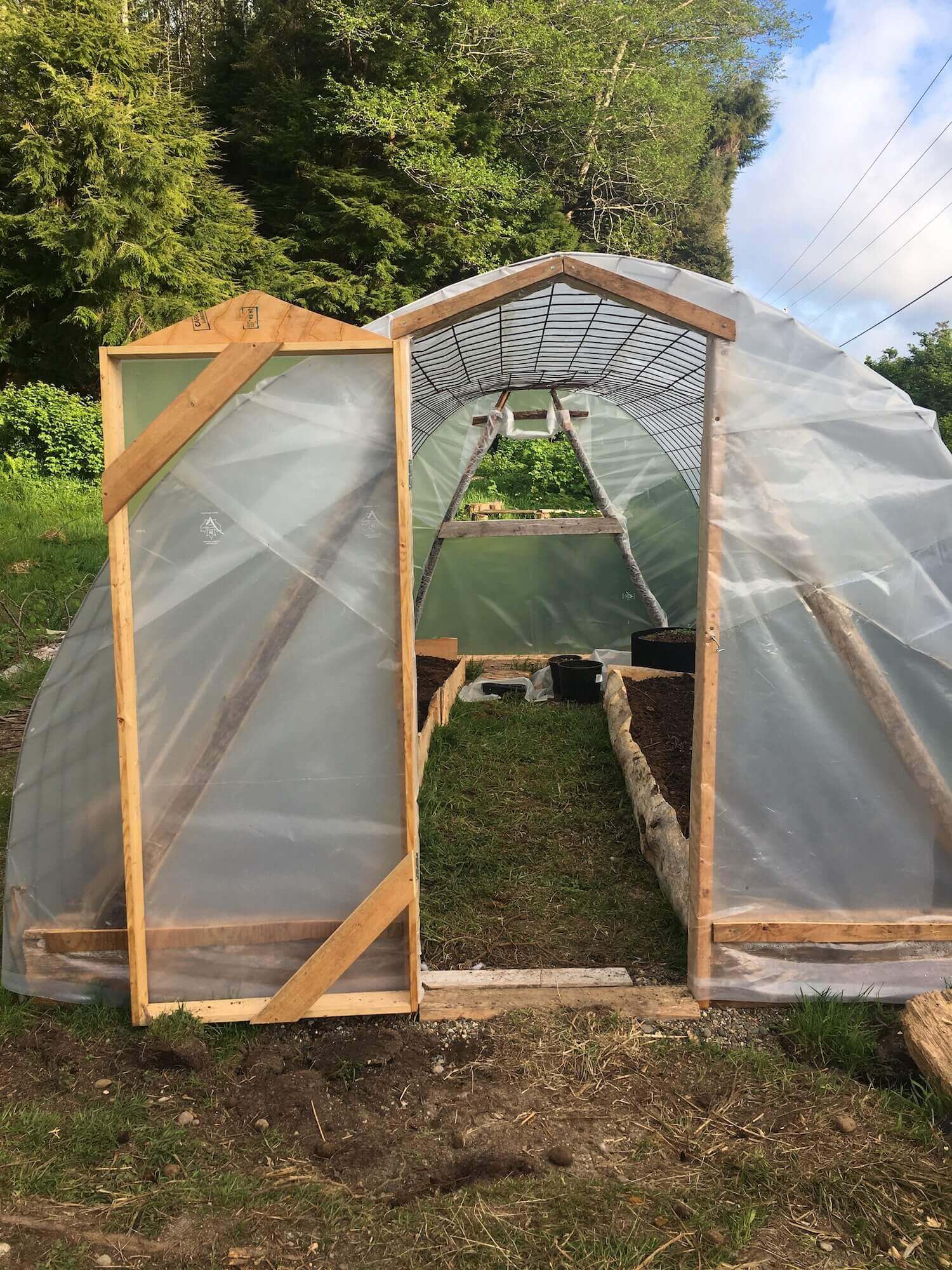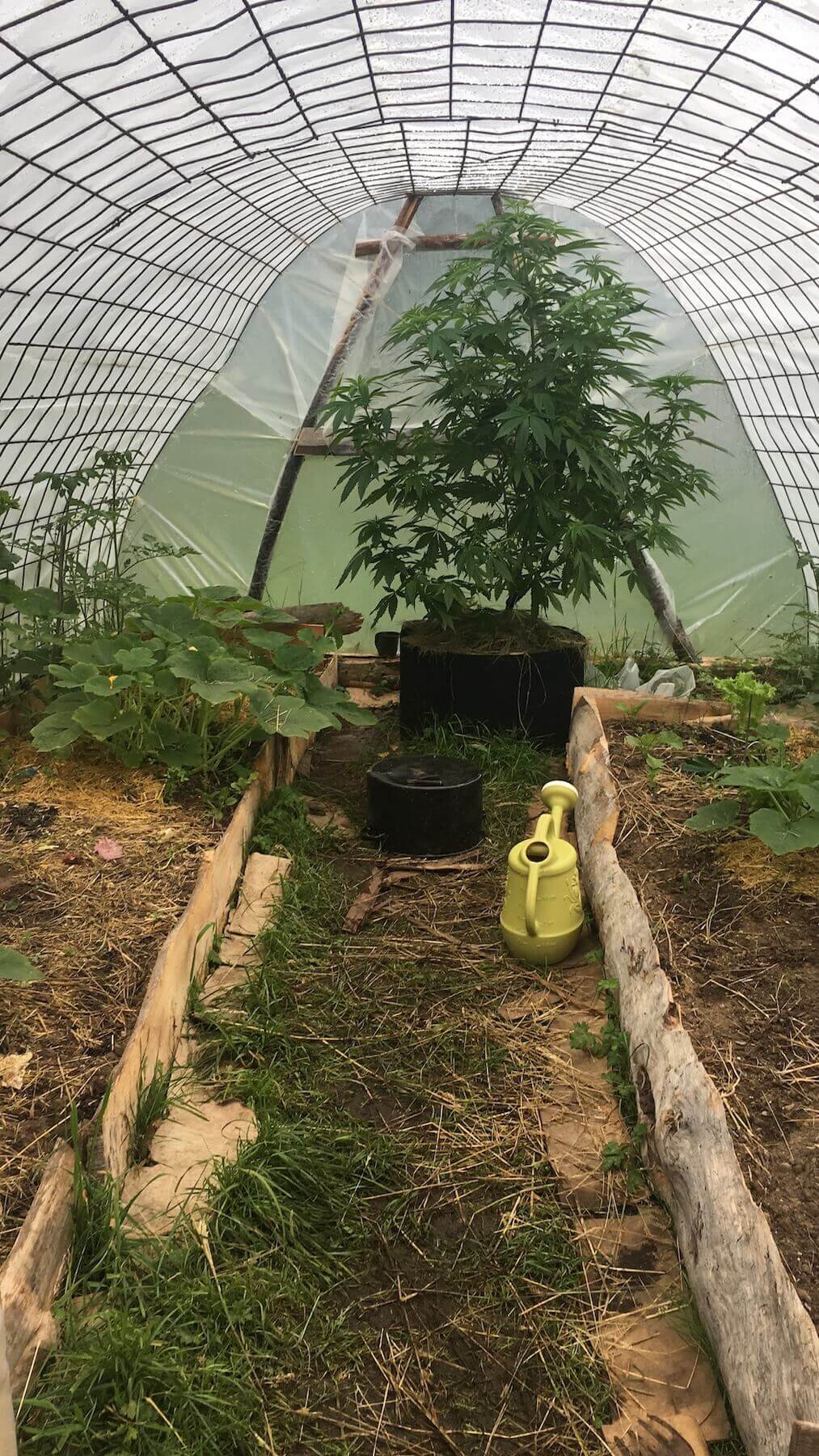 The mission
The mission
Living on the Northwest Coast of British Columbia is beautiful - but it has its drawbacks. I need a greenhouse just as much to divert the rain as I do for the season extension. My first season gardening here was a disaster. Between the slugs, deer, and neverending rain - I managed to eke out a wonderous supply of tea herbs – but not much else from the garden.
To solve several of these issues that led to such a disappointing production (besides still learning the land and its ways) I set out to build a greenhouse, and apply as many permaculture principles to the thing I could.
Requirements and constraints
I already knew I would likely need to purchase poly for this, so it should cut out as many outside inputs as possible It should be built in such a way that I can recycle, reuse or salvage as many materials as possible The design can’t be too complex, because I’m just not that handy (yet) It should be relatively cheap It should survive the crazy winter winds (the islanders up there eat 100km/h gusts for breakfast) It should be large enough to grow a significant amount of food - on all axes The door and path should be wide enough to allow a wheelbarrow through It should fit somewhere out of the way while optimizing sun exposure
Designing
I’ve been a fan of
Edible Acres’ YouTube channel for years now - and always enjoyed their experiments. One of these experiments is the cattle panel greenhouse. This design seemed to fit all the criteria I had for this project so naturally, I got to work.
For the most part, I knew my designs would largely have the be based on the material I could acquire for this project. I needed something to form the shape and hold the poly.
I set out clearing an area that was overgrown with
salmonberry bushes, and staking out approximate sizes. There were very little earthworks required, besides clearing a few salmonberry rootballs and covering the area in a few wheel-barrow loads of sand in an attempt to improve drainage around the future greenhouse.
It was already early spring by this time, and I had started and acquired a ton of seedlings that were ready to grow.
Acquiring materials
One thing I always hated about the property was that the surrounding woods had been used as a dumping site in years past. However, as they say in permaculture: the problem becomes the solution. I scrounged around and took stock of everything I had at my disposal.
➤ Find the full list of materials and more on the build process in the original post.
Unexpected success
One of my favourite aspects of this setup was the vertical space. Although the greenhouse itself is only 6’6” high, there is ample room for vining plants to grow up the sides, using the mesh as a trellis. This worked remarkably well for vining squash. It was a wonderful surprise to walk into the greenhouse and admire all my hanging spaghetti squash as they brightened towards harvest. Tomatoes were a lot easier to manage, with jute tied to the top of the arch guiding the plants along in between the squash.
The
tomatoes and
spaghetti squash flourished here. Many of the other crops did not. It could be attributed to several factors (as is gardening), but both of these crops are especially well suited towards this environment. I think I’ll be doubling up on these next time!
As an added bonus, the greenhouse seemed to prove an ideal habitat for the little green tree-frogs we’ve seen around the yard. At one point we counted over 20 of them hanging out in the greenhouse! They loved the spots between the slabs of the raised bed and the poly. Nice and point, and ready for action if any bugs should come near. Being a source of heat, it also attracted a number of bugs so it made for a perfect tree frog habitat. The frogs in the picture below lived in the cannabis plant for over a week, nestled in the leaves.
 Mistakes and what I would do differently
Mistakes and what I would do differently
My biggest mistake has nothing to do with the design of this greenhouse, but with how I put the garden beds together; I built the frames before putting the cardboard and leaf mould down - in an attempt to smother the grass and buttercup underneath. What I should have done was place the cardboard and leaves down before framing the beds, so the buttercups and grass wouldn’t have as much room to creep through the cracks.
Another issue is water saturation. I placed the greenhouse on a flat spot, at the bottom of a slight pitch. When it rains for days on end (as it does up here) this ground get very saturated, and the water seeps through the soil into the greenhouse, creating a terribly wet environment. If I had thought about this or had the means, I might have dug 9” down and filled the area with sand or gravel to assist in the drainage of the area. For now, I may have to dig a small diversion ditch around the backside of the greenhouse.
–
One of my favourite parts of permaculture and gardening is experimentation. You can gain so much more from first-hand experience, and if you have the means to improve your outputs with even less input - why not give it a try?
If you've got any DIY greenhouse successes or failures, I'd love to see some of them!
For a bonus picture of my "pest control" roommates, and more details of what my build process looked like, check out the original post.

 10
10






 1
1








 1
1




 1
1




 2
2




 1
1




 1
1




 1
1









